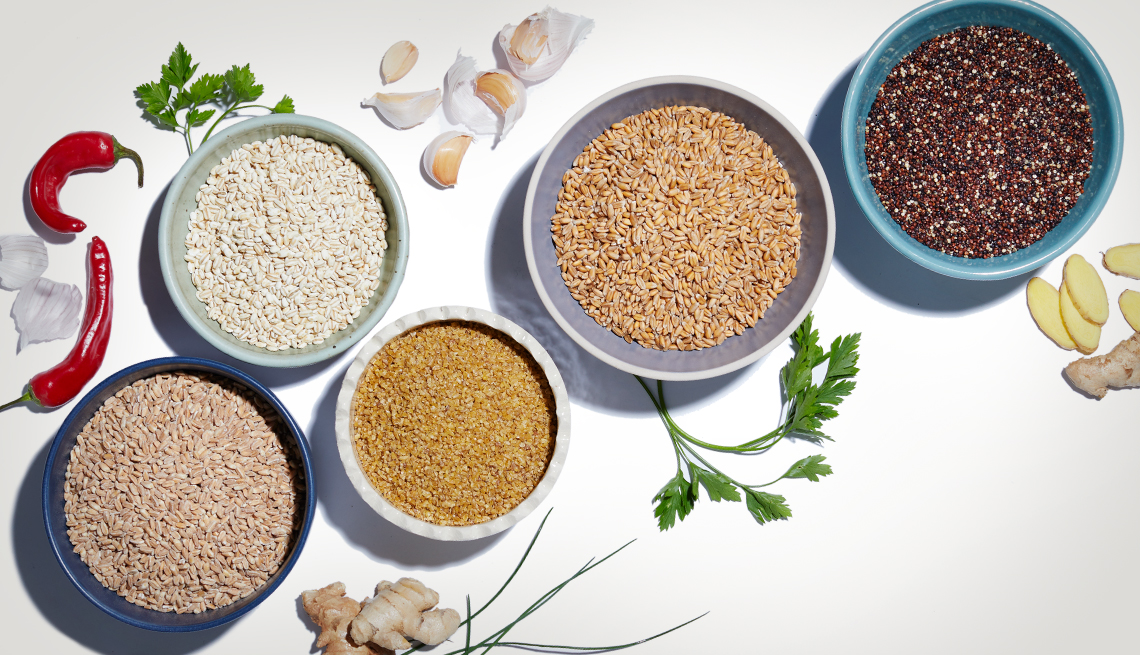AARP Hearing Center
You probably already know that whole grains are better for you than refined grains. Swap white rice for brown rice and you’ll be rewarded with more fiber, more protein, and more vitamins and minerals, says registered dietitian Emma Newell. That means lower cholesterol, more stable blood sugar, better gut health and higher energy levels, among many other benefits.
It seems we may be getting the good news about healthy grains. In a study published in November in The American Journal of Clinical Nutrition, researchers at Tufts University reported that Americans have increased their whole grain intake over the past two decades, although consumption remains far below the recommended 3 ounces a day.
Switching from white to brown rice is a good start, but the feel-good can wear off and the taste-bud blahs can set in. Plus, some research indicates that even healthy diets can benefit from greater diversity rather than the same-old, same-old. We asked chef Franklin Becker of the Press Club Grill in New York City for some suggestions on high-fiber options that will delight our taste buds while keeping all our bodily systems humming along.
Stick to a half-cup serving — about the size of a computer mouse — at each meal. Here are seven options to try, along with some health benefits and serving suggestions. The nutritional information for each is for one serving.
1. Spelt
This ancient grain is one of this list’s leaders for fiber and protein, and it provides essential micronutrients such as iron, magnesium and zinc, says Newell. Spelt is also packed with antioxidants, which are beneficial by removing free radicals that can lead to chronic diseases like heart disease and cancer. It has a nutty and slightly sweet flavor similar to whole wheat. Be wary if you have celiac disease or follow a gluten-free diet, however — spelt, a type of wheat, gets most of its protein from gluten.
Carbs: 26g
Fiber: 4g
Protein: 5g
Best in: Pilaf with mushrooms and onions, or bread
Flavor Boosters
- Add aromatics like ginger, garlic or scallions while cooking
- Before serving, toss with thyme or other fresh herbs
- Cook in vegetable, beef or chicken broth, or toss a Parmesan rind into the cooking water
- Mix different grains together
- Throw a bay leaf into the cooking pot
2. Bulgur
Nutty and a little chewy, this is used often in Middle Eastern cooking — especially Turkish cuisine. It’s a great option when you’re short on time, since bulgur is parboiled (partially cooked) and dried before being ground, and cooks much faster than other grains. Thanks to its high fiber content, this grain can be a good addition to your plate when you’re working to lower your cholesterol or blood pressure or manage symptoms of gastrointestinal disorders such as constipation or hemorrhoids.
Carbs: 17g
Fiber: 4g
Protein: 3g
Best in: Pilaf with fresh herbs or onions and garlic, or subbed for rice in soups







































































